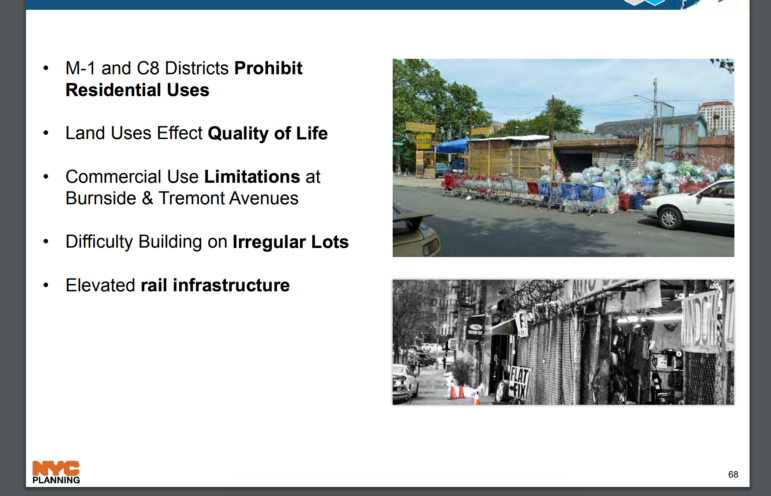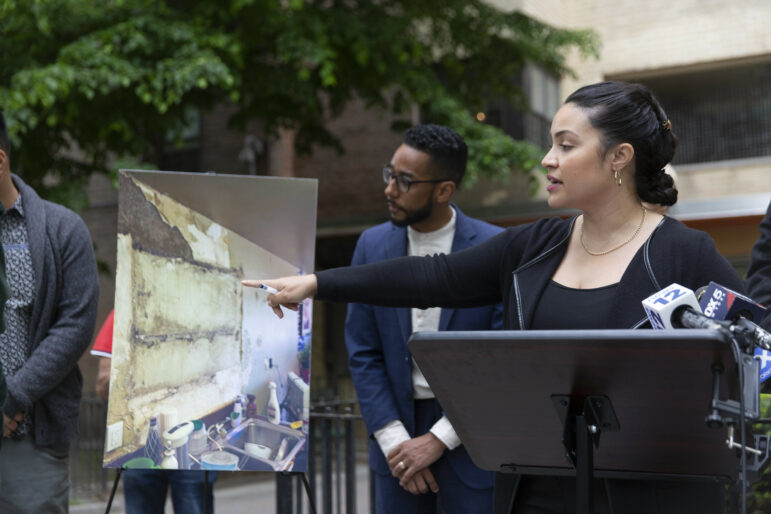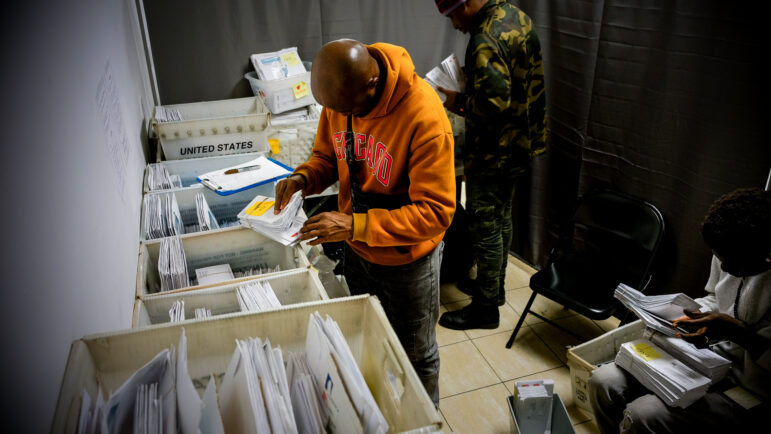
Department of City Planning
A slide from the Department of City Planning's August 2017 presentation on the Jerome Avenue Neighborhood Plan.
The clock is ticking. Community Boards 4, 5 and 7 have until October 30 to vote on the de Blasio administration’s proposed rezoning of Jerome Avenue in the western Bronx. It’s the first stage of the seven-month Uniform Land Use Review Procedure through which a zoning change becomes law.
As City Limits reported, the rezoning proposal is opposed in its current form by a coalition of community, tenant and clergy groups called the Bronx Coalition for a Community Vision. They argue the rezoning will exacerbate displacement and does not come with enough guarantees of good jobs for local residents, among other concerns.
A report produced by Community Boards 4 and 5 last year expressed support for the general vision of the rezoning while calling for certain investments and strategies. Some demands were similar to the coalition’s, including the creation of a certificate of no harassment program to protect existing tenants and investment in apprenticeship programs. Others were different, such as the removal of all auto-zones from the rezoning area and an emphasis on moderate and middle-income housing.
At a Community Board 4 meeting on Monday evening, however, board members still voiced a variety of concerns, mostly relating to displacement pressures and the impacts of population increase on infrastructure.
The joint meeting of the Housing and Land Use Committee, Parks Committee and Health and Human Services Committee began with a presentation by Department of City Planning (DCP)’s Michael Parkinson. He described the three-year process through which DCP and other agencies have worked to listen to the community’s desires and design a neighborhood plan that includes strategies not just for housing and zoning but also for public realm improvements, park and transit investments, economic development efforts and more.
Some of these investments have already begun. Responding to the feedback provided over the past year from the boards and other stakeholders, the city has started convening a group of job training organizations and employers to create something similar to the successful Lower East Side Employment Network, which ensures local residents are primed to take advantage of new jobs coming to the community. In addition, community organizations have completed a Commercial District Needs Assessment and have already received $1 million in funding to carry out revitalization activities.
Parkinson also outlined the zoning changes that the department has proposed for Jerome Ave. and some neighboring corridors between E. 165th Street and 184th Street. Zoning changes would allow 11- to 16-story buildings in many areas, permit 19-story buildings at two key nodes, retain the existing auto-motive and manufacturing zoning in a few places, and mandate other requirements such as mandatory inclusionary housing, ground-floor retail and set-backs along the elevated rail.
Parkinson said that the area cannot yet support market-rate residential construction, so developers will rely on the city for subsidies and the city will in turn require those developers to abide by termsheets, ensuring much of the housing that would be constructed along Jerome in the near term would be affordable. He said the agency has already been holding conversations with a variety of non-profit or mission-driven housing groups that are interested in taking part in the redevelopment, including Mount Hope Housing Corporation, Settlement Housing Fund, Services for the UnderServed and Bronx Pro Group.
Skeptics of the mayor’s strategy say that a rezoning can itself change the market and encourage speculation, but Bronx DCP Director Carol Samol argued on Monday night that, “the rezoning does not make the market…we’re just changing the regulations.”
Board members asked many questions about the rules regulating affordability, from how MIH is enforced (the Department of Housing, Preservation and Development has a whole regulatory system, DCP reps said), to how the city’s community preference policy works (it gives residents of the district a priority for 50 percent of affordable housing units).
A couple members referenced other neighborhoods of the Bronx or upper Manhattan that are facing development as a result of rezonings. “They were complaining that these developers were coming in and building condos,” said one member about Harlem. “I’m concerned that this is going to happen here in the Bronx also.” (After the meeting, however, another board member told City Limits she was not concerned about displacement, but about whether the landlords of 100 percent affordable development would actually be able to maintain their buildings.)
Others raised concerns related to the stresses of overcrowding, including worsened traffic congestion and reduced parking. One board member argued that there was little way to tell how much development would occur and whether the city’s investment in neighborhood services would be sufficient. “The answers that are being given…it’s B.S. because nobody truly knows what’s going to happen,” she said.
Jackson Strong, a board member and developer, expressed concerns with the logic of using taxpayer money to subsidize developers of 100 percent affordable housing. There wouldn’t be much revenue from property taxes for the city, and the money spent on subsidizing developers could be better used to fund other social needs, he argued.
Parkinson and Samol tried to allay concerns about displacement by stressing that construction in the near-term would be mostly affordable. They explained that a variety of mitigation strategies were currently being explored to deal with impacts on things like transit and they defended the vision of subsidized construction given the housing crisis. “We really see this as an essential service for the city,” Parkinson said.
Ultimately, it seems like the board remains open to discussion, if also cautious. Parks Committee Chair John Howard Algarin, who facilitated the meeting, noted that in the past, the board had made recommendations to the city only to find their ideas not listened to. “It’s a dynamic that’s a little bit disheartening because, what does our vote matter if you’re going to do what you’re going to do anyway?” he said. Despite that history, he urged the board members present to be deeply involved in the discussion.
“If we do nothing the private market is going to come and do something…We have a venue here and a mechanism for our input,” he said.
A Jerome Avenue Neighborhood Plan Open House, sponsored by community board 4 and 5, will be held on Saturday September 16, 12 pm to 4 pm, at Bronx Museum of the Arts, 1040 Grand Concourse. The two boards will also hold a hearing on the rezoning proposal on Wednesday October 4, at Concourse Village Community Center, 777 Concourse Village East, in the Bronx. Board 5 will host its own public hearing on Wednesday October 11 at Bronx Community College from 5 pm to 10 pm.








